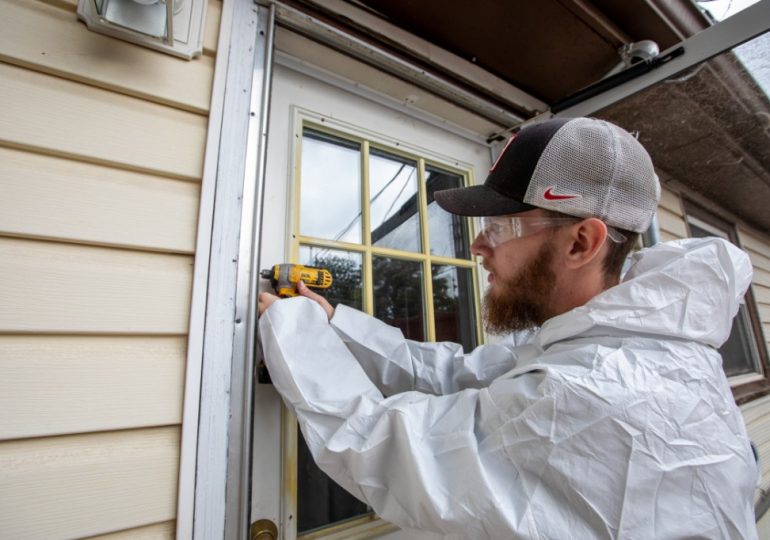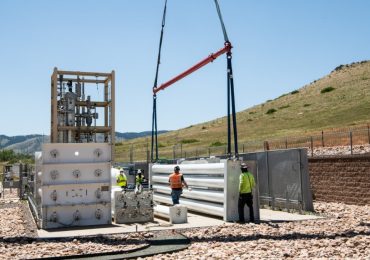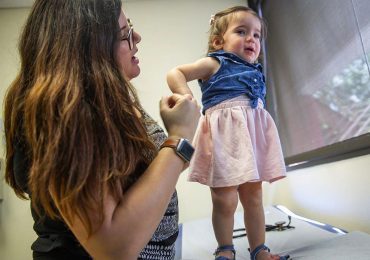A new weatherization jobs resource hub in Wisconsin is part of advocates’ effort to avoid the boom-and-bust cycle that followed previous increases in federal energy efficiency funding.
Green Workforce Connect is a program of the Interstate Renewable Energy Council (IREC), which recently rolled out the platform in Wisconsin, Pennsylvania, and Oklahoma with hopes to eventually expand it nationwide. The site is designed to go beyond your typical “niche job search board,” said IREC program director Pagan Poggione.
“There’s a disconnect between the key players” — including contractors, job seekers, and organizations implementing the federal government’s low-income Weatherization Assistance Program — “that Green Workforce Connect is trying to address,” Poggione said.
The federal weatherization program received $3.5 billion under the 2021 Bipartisan Infrastructure Law, with additional funds promised under the Inflation Reduction Act. Advocates hoping to make the most out of that funding have looked to 2009’s American Recovery and Reinvestment Act as a cautionary tale.
That Obama-era law provided $5 billion over three years for the Weatherization Assistance Program, allowing the industry to train thousands of people to seal and retrofit aging homes. Many of those trainees, though, never found long-term jobs and left the sector, industry leaders say. Then in more recent years, weatherization employers have struggled to find workers.
Industry and community leaders are hopeful the structure of current programs will avoid the problems of the past, and they are trying to build organizational systems to match weatherization worker supply with growing demand.
Larry Zarker, CEO of the Building Performance Institute that certifies weatherization training programs, said he hopes the new federal funding and efforts like Green Workforce Connect will lead to a long-term workforce training pipeline and growing industry.
“Back in the (ARRA) era, a lot of money was thrown out there for training, everyone got certified, the money was spent and then it was gone,” Zarker said, likening a graph of the funding trajectory to an image of a snake that had swallowed a giraffe.
“There was an incredible rise in people trained and there weren’t jobs to sustain it. Now there is money for training and certification, but it’s over a 10-year period” — rather than three years with the ARRA funding. “We can scale this as demand rises, and meet the market needs.”
An underappreciated program
Since it started in 1976, the Weatherization Assistance Program has helped weatherize 7.2 million low-income homes, about 35,000 each year, according to the U.S. Department of Energy. Homes on average save $372 per year on energy bills, and the program supports about 8,500 jobs, the agency says.
A study by Oak Ridge National Laboratory chronicled the expansion that occurred from 2009-2011 thanks to the ARRA funding, which boosted the average spending on each household from $2,500 to $6,500 and lifted the qualifying threshold from 150% to 200% of the federal poverty level. The program is administered by state energy offices, and the amount of aid each household receives is determined by various factors.
A network of about 700 community and nonprofit organizations nationwide, including about 20 in Wisconsin, facilitate the program, enlisting residents and arranging energy efficiency audits and weatherization upgrades.
But those organizations often cannot find the contractors and direct employees needed to carry out the work, said Poggione.
“Even though it’s been around since 1976, many people don’t know what the weatherization program is or how the program works,” Poggione said.
Organizations carrying out federally-funded weatherization often say they struggle to find contractors to do the work or employees to hire.
“On the flip side, job seekers say it’s hard to find employers or trade programs that are vetted,” Poggione said. “The intent is to help those individuals and contractors make connections to local employers and training providers to help them make the next step.”
Poggione said organizations have told IREC they plan to “double or triple their staffs to meet demand, and it’s not going to slow down. As funding comes online, we need more and more people trained, and we’re going to need training center expansion as well.”
An under-appreciated job
“Weatherization” may not be a career that pops to mind often when people are considering their futures.
“The weatherization program can feel somewhat nebulous, if someone has not been exposed to it, it can be confusing,” said John Fleet, director of weatherization and housing for Partners for Community Development, which provides federally-funded weatherization in the Sheboygan, Wisconsin area. “What does weatherization even mean, what do they do?”
But experts note that weatherization is an attractive job prospect, since one can enter the field without higher education, receive free training at federally-funded centers and move up a ladder of jobs.
“I tell my staff, younger people that work for me or prospective employees: the sky is the limit in what you can do with this program,” Fleet said. “I know people that have no college education, who became very successful as a weatherization installer, then became crew leader, became an energy auditor. Someone could work with us and go start their own business. It’s a very broad industry that intersects with many others. It’s a good nurturing place for someone to get their career started.”
He said weatherization employers have faced a worker shortage for years, a problem that dovetails with a shortage of workers in the construction industry more generally. Despite the brief weatherization boom driven by the ARRA, Fleet said there’s been a longer trend affecting weatherization and related trades.
“We’ve had a lot of retirees since the Great Recession,” that followed the 2008 economic crash, he said. “People just didn’t get back into the construction industry. Even more than that, there was a push for people in the 1990s to 2000s to get away from the trades and send kids to college, as opposed to realizing that the trades are a great, exciting viable career opportunity.”
Weatherizing a home involves a lot more than putting in storm windows or improved insulation and HVAC, experts note.
“It starts with building science principles, understanding how a house works, understanding the things that can compromise comfort, safety, energy, and durability of a home,” said Zarker. “Then we can use the diagnostic equipment, take that data, model the performance of a home and understand what kinds of savings you can achieve.”
Kelly Carey, Building Performance Institute marketing specialist, noted that while the Bipartisan Infrastructure Law provides 10 years of funding for the Weatherization Assistance Program, “we won’t get to all American homes in 10 years. Hopefully at the end of that time, it becomes an expectation that my home is energy efficient and it’s comfortable, I’ll expect that of my builder and renovator.”
With federal funds flowing, weatherization industry prepares to fill the gaps is an article from Energy News Network, a nonprofit news service covering the clean energy transition. If you would like to support us please make a donation.
Leave a comment









